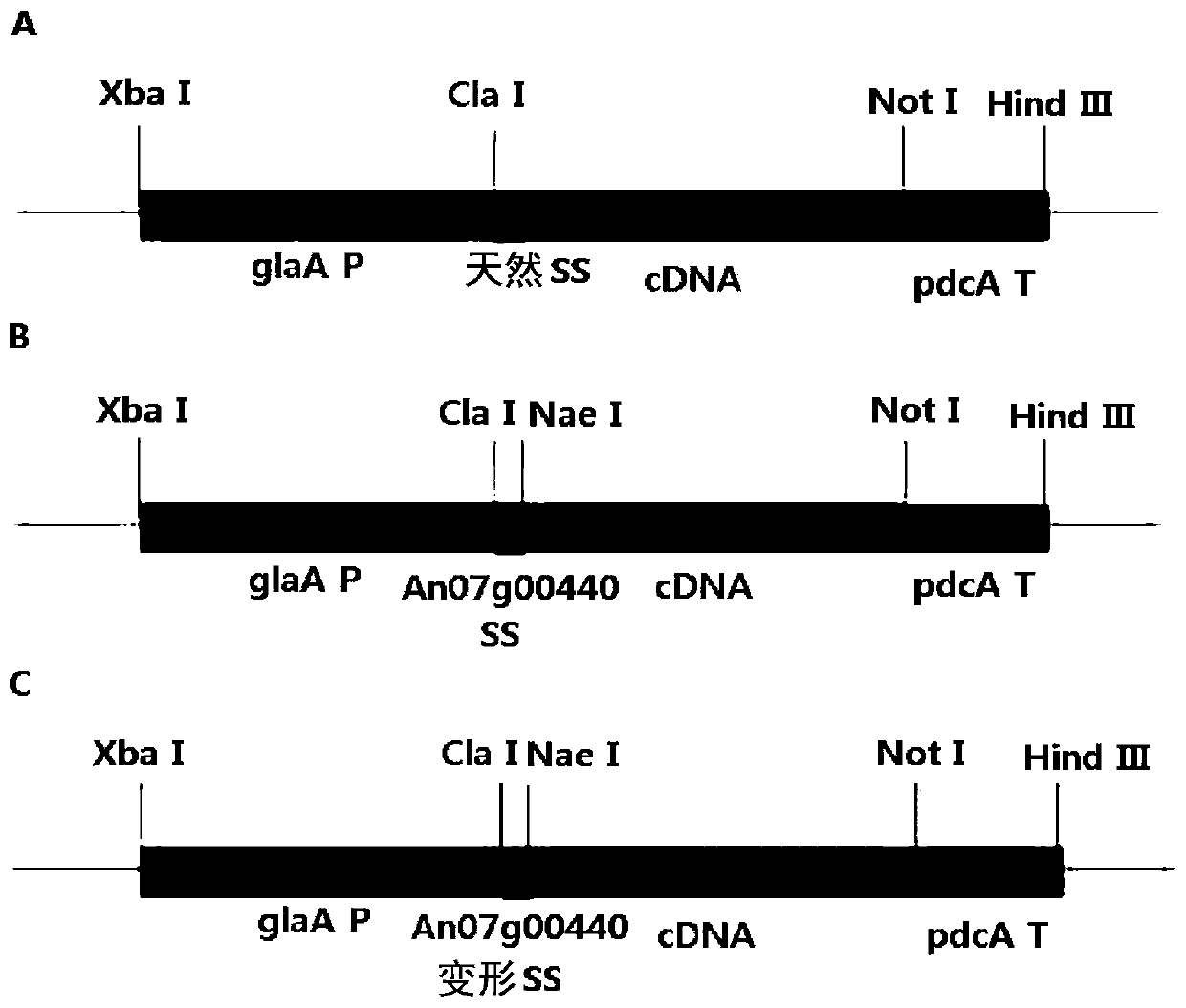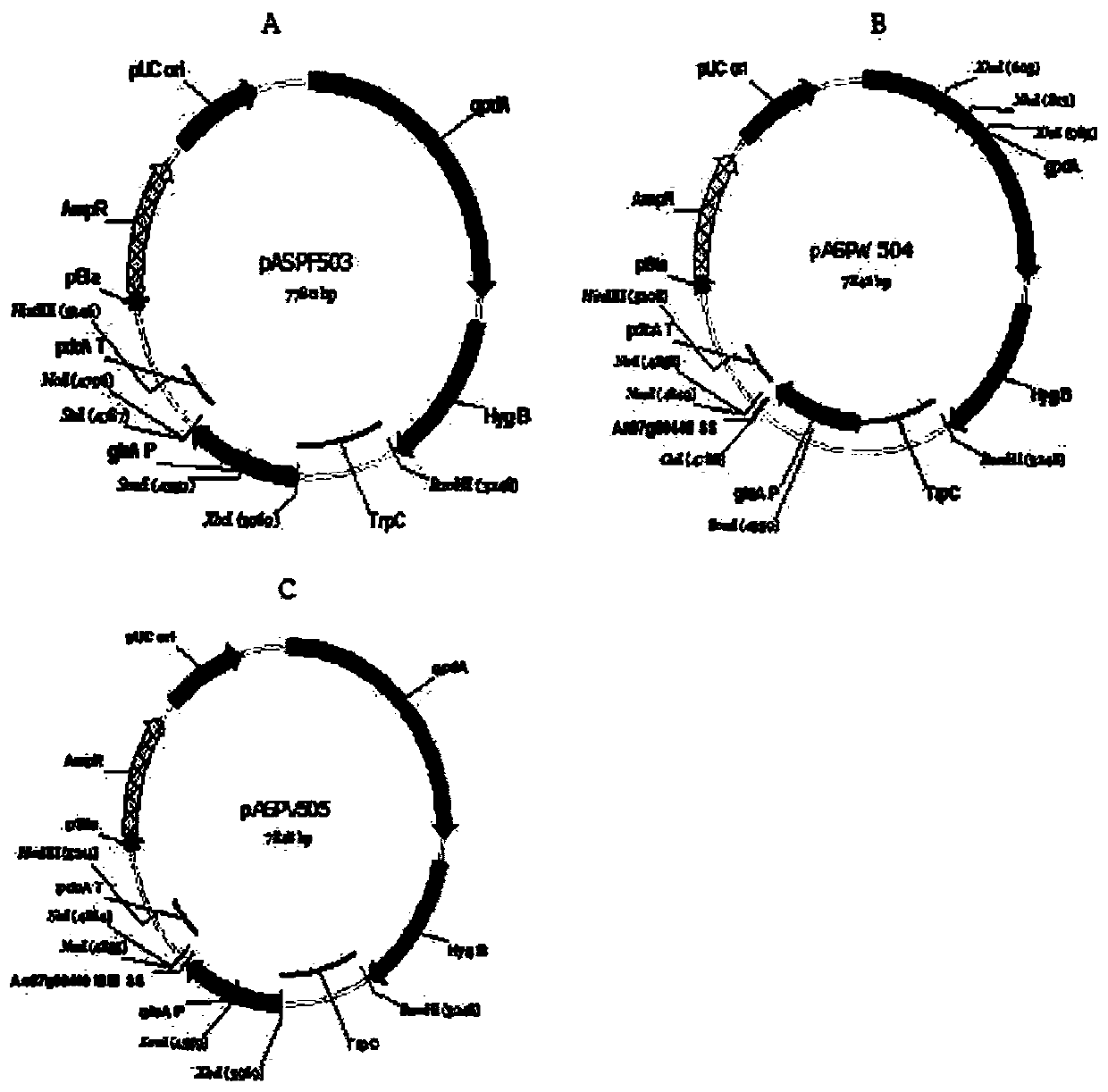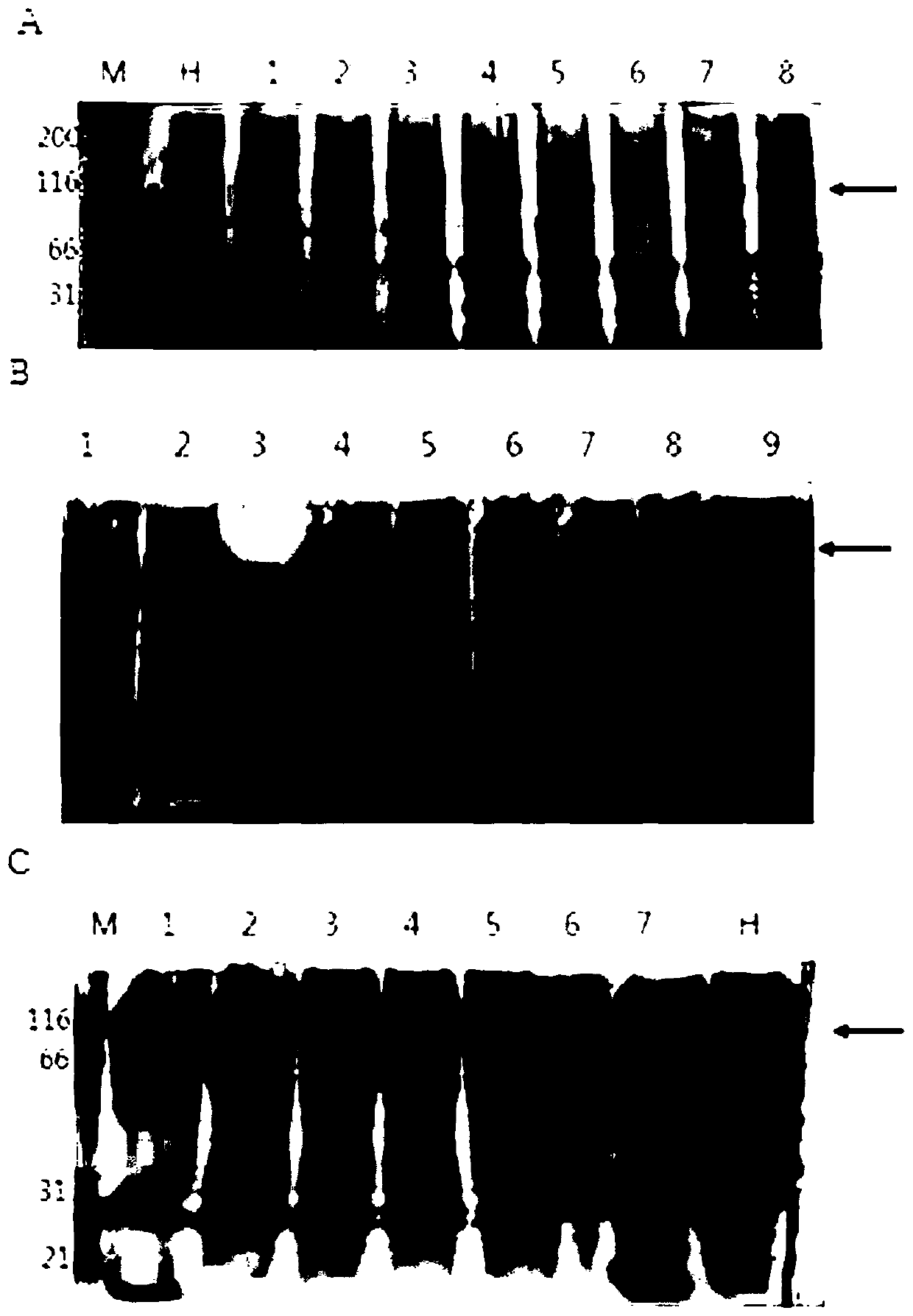Novel catalase signal sequence and catalase expression method using the same
A technology of catalase and signal sequence, which is applied in the field of mass production of catalase, and can solve the problems of inability to express proteins in large quantities and the like
- Summary
- Abstract
- Description
- Claims
- Application Information
AI Technical Summary
Problems solved by technology
Method used
Image
Examples
Embodiment 1
[0044] Example 1: Preparation of expression vectors pASPW504 and pASPW505
[0045] 1-1: Chemical synthesis of An07g00440 lipase signal sequence and An07g00440 lipase variant signal sequence
[0046] In order to secrete catalase to the outside of Aspergillus niger, the An07g00440 lipase signal sequence and the An07g00440 lipase variant signal sequence represented by SEQ ID NO: 3 or 4 were chemically synthesized. The amino acid sequence of the protein encoded by the An07g00440 lipase signal sequence and the An07g00440 lipase variant signal sequence of SEQ ID NO: 3 or SEQ ID NO: 4 is the following SEQ ID NO: 1 or SEQ ID NO: 2, respectively.
[0047] The An07g00440 lipase signal sequence of SEQ ID NO: 1 consists of 2 amino acids in the N-domain, 12 amino acids in the H-domain, and 5 amino acids in the C-domain (19 amino acids in total). The An07g00440 lipase modification signal sequence of SEQ ID NO: 2 is to convert tyrosine as the second amino acid into a positively charged argi...
Embodiment 2
[0059] Embodiment 2: Preparation of catalase expression vectors pASP503PMC, pASPW504PMC and pASPV505PMC
[0060] The catalase protein code of sequence number 5 from Penicillium marneffei has a total of 734 amino acids, and includes 19 signal sequence (mrglyslgtlaglvvaasa) and 23 presequence (acpmltgelpagsvanphhhgkr) amino acids. By making the two ends of the base sequence of PMC (Penicillium marneffei catalase) have the recognition sites of the restriction enzyme ClaI and the restriction enzyme NotI respectively, the 2205bp size of SEQ ID NO: 6 was derived from Penicillium marneffei. The catalase gene was chemically synthesized and cloned in the pGEM-B1 vector.
[0061] The PMC DNA containing the signal sequence was cut with ClaI and NotI, cloned into the pASPF503 vector of Example 1-1, and named pASP503PMC.
[0062] PMC DNA that does not contain a signal sequence in SEQ ID NO: 6, by using the PMCVF1 primer (gcctgcccaatgctgacaggcg) of SEQ ID NO: 7 that does not have a restric...
Embodiment 3
[0063] Embodiment 3: the preparation of the recombinant microorganism that introduces expression vector and the screening method of recombinant microorganism
[0064] The expression vectors pASP503PMC, pASPW504PMC and pASPV505PMC of Example 2 were introduced into Aspergillus niger for transformation (Tilburn et al., Gene., 26:205-221, 1983). For transformation, pASP600s DNA was inserted into the genome after liquid cultured mycelia were treated with cell wall degrading enzymes to prepare protoplasts. Furthermore, in order to select recombinant microorganisms, the selection was carried out on an agar medium supplemented with hygromycin, followed by subculture.
PUM
 Login to View More
Login to View More Abstract
Description
Claims
Application Information
 Login to View More
Login to View More - R&D
- Intellectual Property
- Life Sciences
- Materials
- Tech Scout
- Unparalleled Data Quality
- Higher Quality Content
- 60% Fewer Hallucinations
Browse by: Latest US Patents, China's latest patents, Technical Efficacy Thesaurus, Application Domain, Technology Topic, Popular Technical Reports.
© 2025 PatSnap. All rights reserved.Legal|Privacy policy|Modern Slavery Act Transparency Statement|Sitemap|About US| Contact US: help@patsnap.com



